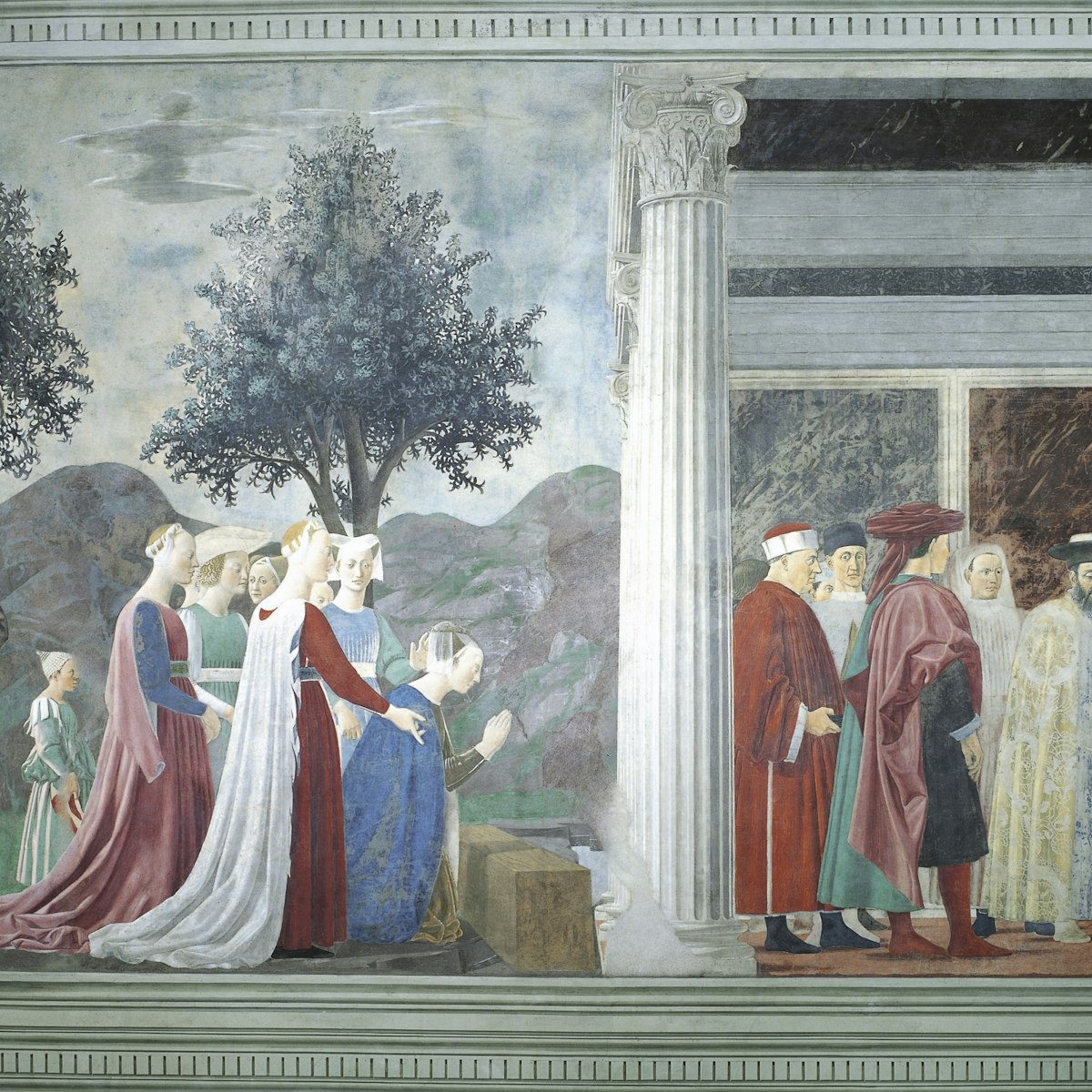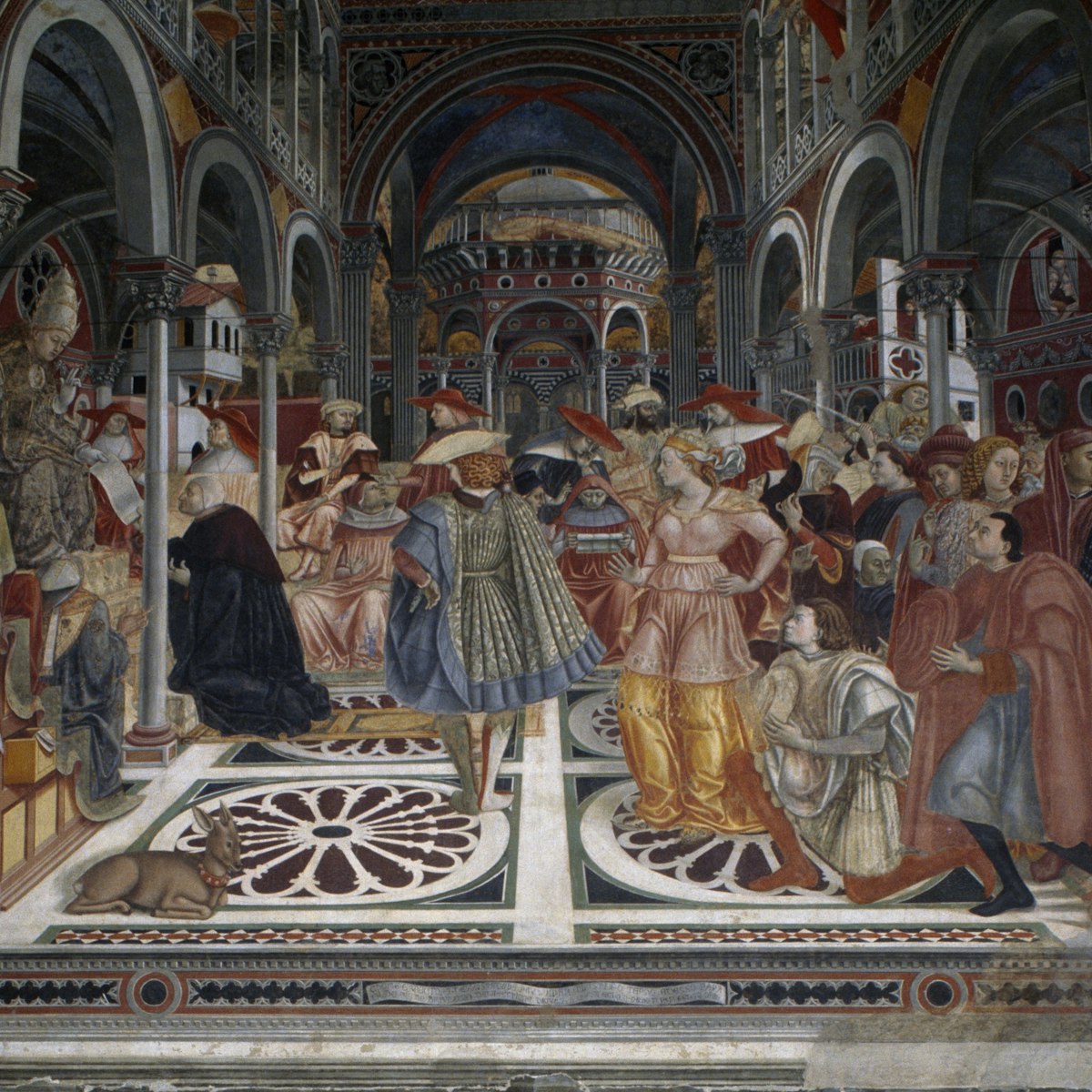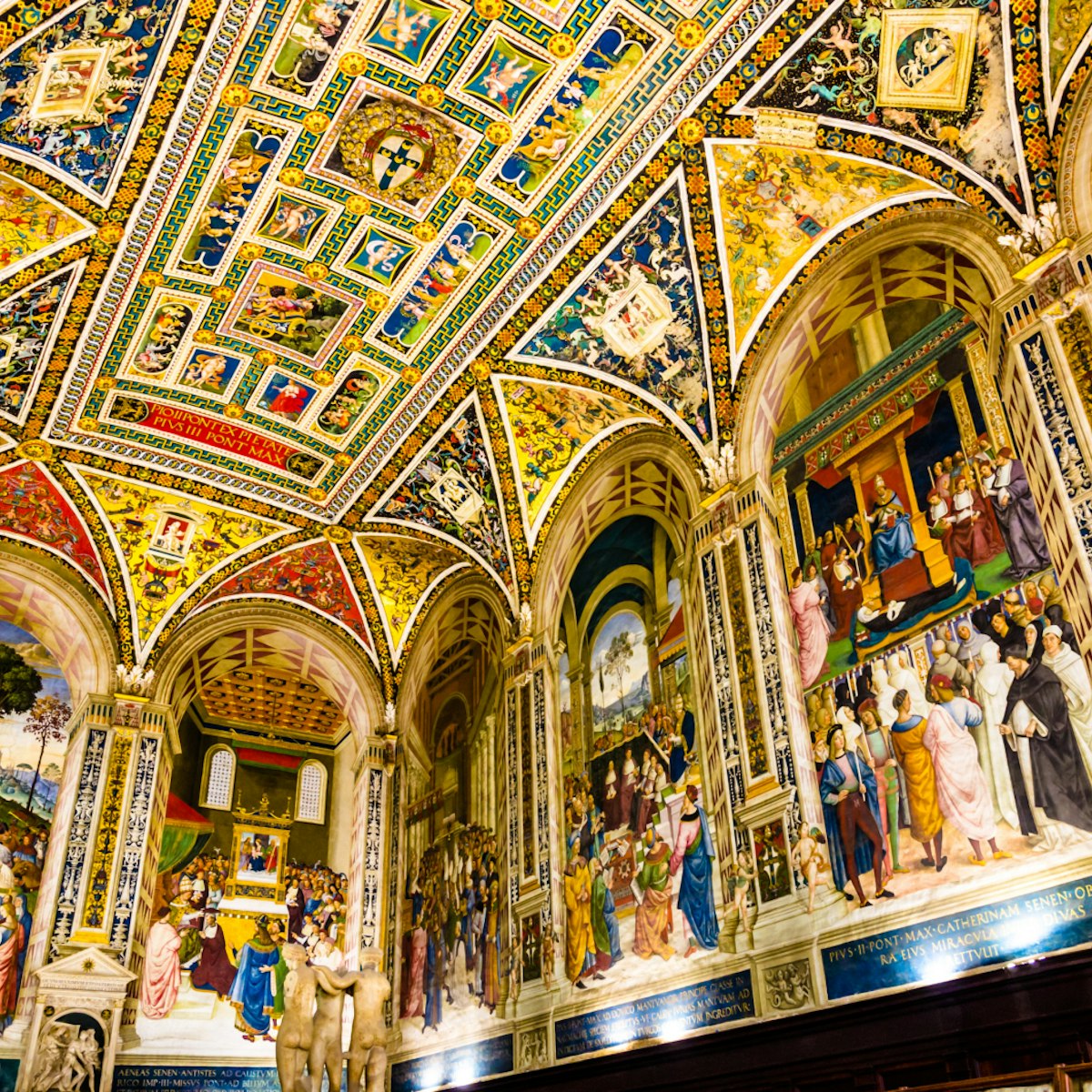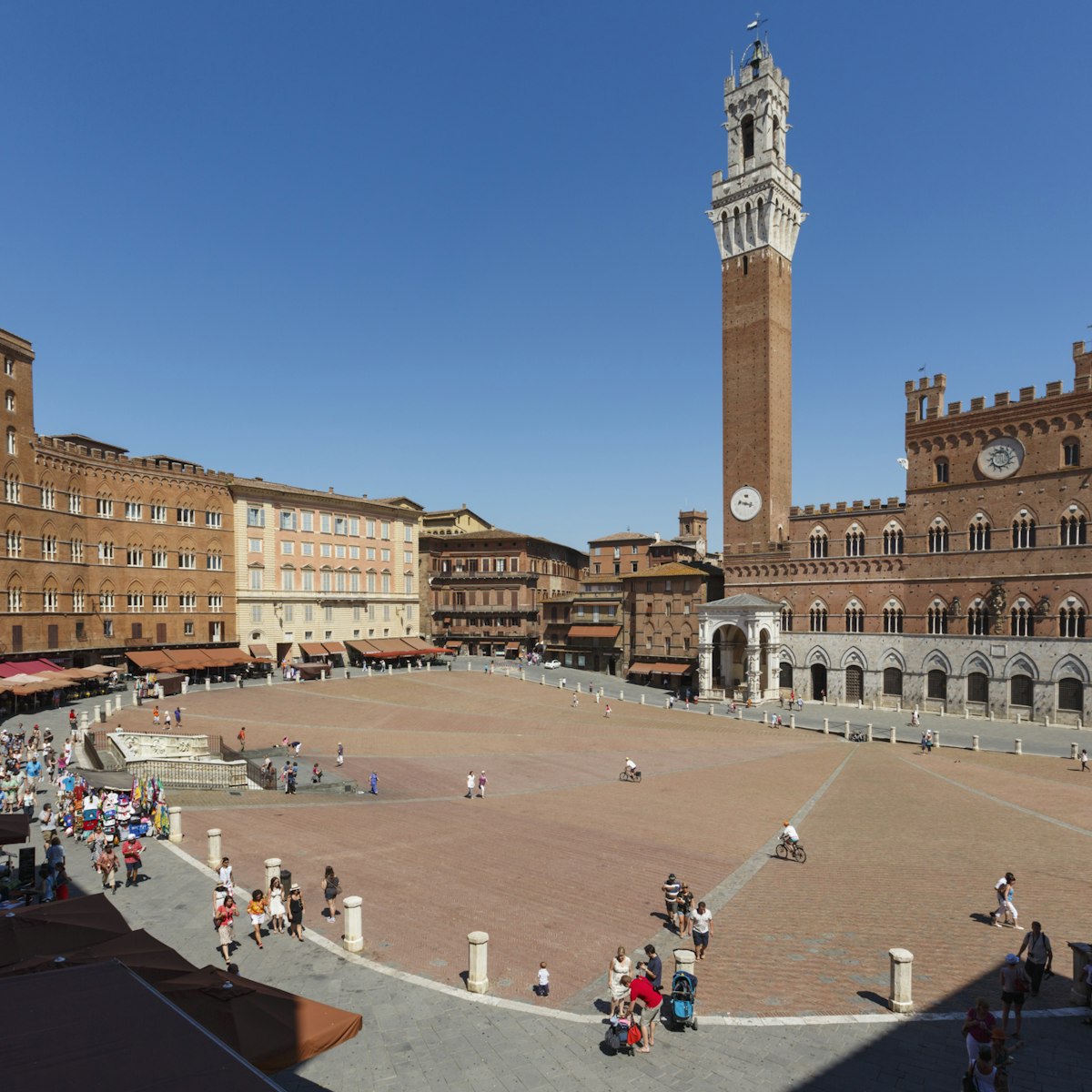Entered via the Palazzo Pubblico's Cortile del Podestà (Courtyard of the Chief Magistrate), this wonderful museum showcases rooms richly frescoed by artists of the Sienese school. Commissioned by the city's governing body rather than by the Church, some of the frescoes depict secular subjects – highly unusual at the time. The highlights are two huge frescoes: Ambrogio Lorenzetti's Allegories of Good and Bad Government (c 1338–40) and Simone Martini's celebrated Maestà (Virgin Mary in Majesty; 1315).
After buying your ticket, head upstairs to the Sala del Risorgimento, where late-19th-century frescoes serialise key events in the Risorgimento (reunification period). Continue through to the Sala di Balìa (Military Court), where frescoes by father and son Spinello and Parri Aretino recount episodes in the life of Pope Alexander III (the Sienese Rolando Bandinelli), including his clashes with the Holy Roman Emperor Frederick Barbarossa. Straight ahead is the Sala del Concistoro (Hall of the Council of Clergymen), dominated by the allegorical ceiling frescoes (1529–35) by the Mannerist painter Domenico (di Pace) Beccafumi. Through a vestibule to the left are the Anticappella (Chapel entrance hall) and Cappella (Chapel). The Anticappella features frescoes painted in 1415 by Taddeo di Bartolo. These include figures representing the virtues needed for the proper exercise of power (Justice, Magnanimity, Strength, Prudence, Religion), and depictions of some of the leading Republican lights of ancient Rome. The Cappella contains a fine wooden choir and a fresco of the Holy Family and St Leonard by Giovanni Antonio Bazzi (aka Il Sodoma). Next to the Anticappella is the Vestibolo (Vestibule), whose star attraction is a bronze wolf, the symbol of the city.
The vestibule leads into the Sala del Mappamondo (Hall of the World Map), which houses Simone Martini's powerful and striking Maestà. This depicts the Madonna beneath a canopy surrounded by saints and angels, and is one of Martini's first known works, painted when he was only 21 years old. On the other side of the room is Martini's oft-reproduced fresco (1328–30) of Guidoriccio da Fogliano, a captain of the Sienese army. Also here is The Conquest of the Giuncarico Castle, attributed to Duccio (di Boninsegna) and painted in the early 14th century.
The next room, the Sala dei Pace, is where the ruling Council of Nine once met. It's decorated with Ambrogio Lorenzetti's fascinating fresco cycle, the Allegories of Good and Bad Government (c 1338–39), often described as the most important secular painting of the Renaissance. The central allegory portrays scenes with personifications of Justice, Wisdom, Virtue and Peace, all unusually depicted as women, along with scenes of criminal punishment and rewards for righteousness. Set perpendicular from it are the frescoes Allegory of Good Government and Allegory of Bad Government, which feature intensely contrasting scenes clearly set around Siena. The good depicts a sunlit, idyllic, serene city, with joyous citizens and a countryside filled with crops; the bad city is filled with vices, crime and disease.
Before leaving the museum, be sure to visit the recently restored Loggia dei Nove at the rear of the building, which commands a panoramic view to the Orto de’ Pecci and the south of the city.







